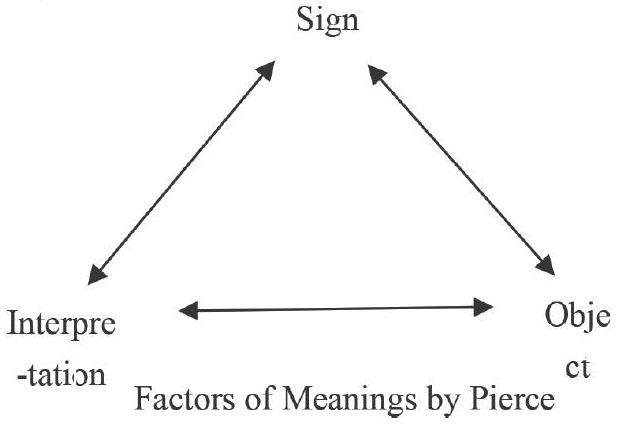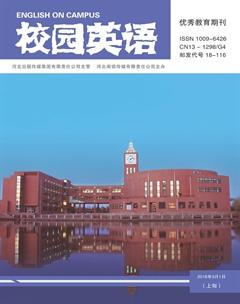Media Language and Ways of Reading Newspaper
Hsieh Hui-ling
Language is a kind of expression rule of abstract system, and the colloquialism or text formed by the application of language system to speak or write in a certain context is called “discourse”. While the discourse of mass media is the expression way communicated via mass media, the discourse of public news focuses more on the information communication about the process of things happened, which shows strong property of organization in communication.
The Language and Sign Construction of Media
The word “media” derives from Latin etymology “medium”, which means “intermediate”. Media refers to the communicating channel of significance between the audience and outside world and the visual and oral construction of media builds the reality it describes, which is related to semiology, that is, how to bring social effects through different languages and signs, such us colors, gestures, pictures, fashions and vocabularies, etc.
The bidirectional arrow in this model of Semiologist Pierce stresses that, only when the single factor is connected with other two factors, can it be understood. The signs refer to some certain things or events but themselves and are understood by objects, which can have an effect called interpretation on the psychology of objects. No matter the speaker or the audience, the writer or the reader, and the reporter or the audience, are the users of signs. And the interpretation is a psychological concept of sign users, by which activity and creativity are owned by both communicator and receiver (John Fisker,1995).
Any factor is the communicating carrier of a trinity. It apples news, a typical sign and the unique form (signifiers, i.e. signs) to integrate with the content of the recent and current events(the signified, i.e. interpretation), through the combination of the value evaluations of communicators such as their feelings, attitudes and suggestions to reality, which is then passed to the audience(i.e. object). As the thought of Pierce, signs stand for some certain things or events to every object under some certain situations or conditions. That is to say, it is to create the same sign or a more delicate sign in the mind of objects. The sign created by objects can be called as the interpretation of the original sign, and the thing or event the sign stands for, is the signified one.
In the newspapers and periodicals, what kind of forms should be adopted to report news? What is the size of title? Should it be stressed or weakened? Details like the arrangement of pictures and charts, their sizes and pages, the forms and styles of reporting writing, people citing the source and the role of organizations, etc., are the signs presented by newspapers and periodicals. The intention of news organizations to code with these signs, is that the reader could decode the meaning of signs. However, though the social environment of readers and the environment assumed by news organizations share similarities, there still exists some differences or even some distinct differences between them. Readers may not be able to accept all the news realities constructed by news signs; they should not totally take them, but to rationally judge them, to supervise them and to give them feedback.
The Producing Process of News in Newspapers
From the view of semiology, the so-called news production refers to that the media text is produced by intention, and the activities of media is its series of industrial process, the process of encoding-decoding. Most of production is for commercial interests, and mostly the focus of comment on media are to find out how the commercial levels intertwine with each other and how they are strengthened. Besides, sometimes the attention is paid to observing the relative influence of non-profit media with the nature of public service or niche publishing, and sometimes it is paid to the influence of government or organizations on media production.
Stuart Hall(1980)stressed the transformation process from the source to accepting analysis and interpretation experienced by media information. On the basis of semiology, he assumed all the meaningful “information” are constructed and passed to “the decoder” by “the encoder” from the signs with specified and implied meanings, which is commonly agreed by the sender “encoder”(the news reporter and editor) and the receiver “decoder”(the audience) in the same culture. He stressed the power of text.
He assumed that communicators encoded the information selectively for the purpose of ideology and receivers would not receive and understand the information of intact, but resisted the influence brought by consciousness through the adaptive or opposite interpretation according to their own experience and views. Different people or different second cultures would usually interpret the world and media information from different social positions.(Denis McQuail & Sven Windahl, 1982)
Media industry usually makes decisions based on standardized business principles. However, different from other forms of manufacturing industries- for example, the production of press printed news- the source of media industry differs from other manufacturing industries, and its selecting standards are under the considerations of industry on the specialty and the internal and external environment; there is no certain price for the cost taking news as raw materials, and even some of them are free; the news products may not be necessary, the patterns of copying and producing are not changeless and their applied technologies varies; the cost of human resource is usually higher than the manufacturing industry; the circulation life of product is very short, some even shorter than a single day; and the profit obtained from the sales of products occupies only a small part, and others are mostly or even totally from the advertisement.
The Reading Methods of Newspapers and Periodicals
With the basic understanding of the producing process of news in newspapers and periodicals, we know that news reports are a series of encoding for signs, and different readers have different interpretations and understandings on news based on their different cognition coming from their own social environment, cultural background, status, genders and ages. At the same time of reading newspapers, readers should keeping questioning, to think why the news is reported with such a form? Whose position is kept in reporting the event? Is there any possibility that the truth is hidden or twisted? Is there any other purposes when newspapers and periodicals guide readers to acknowledge a truth?
Have you ever paid attention to your reading habits? Why do you choose to read newspapers and periodicals? Which newspapers and periodicals do you like, and which do you dislike? Which kinds of news do you like to read? What news do you think important, and what is redundant? Which opinions about news do you agree, and which kind of news do you despise? All the answers of questions above are inevitably connected with our ages, genders, social and economic statuses, races, political positions, preference and interest, and even emotions
According to the critical methods of reading newspapers proposed by Luo Wenhuim, a Taiwan scholar of communication studies, the methods of reading newspapers should involve the acquaintance of pages, introductions, teletexts, sources of information, and the basic writing formats of various news. Besides, he suggests that audience adopt reading strategies and evaluating methods of news as follows:
1. Strategies of Reading Newspapers:
(1) To read Page 1 first.
(2) To pay attention to news summary.
(3) To find out your favorite pages.
(4) To pay attention to the headlines of every page.
(5) To judge the content with the title of news.
(6) To judge the content with the introduction.
(7) To pay attention to news analysis, new feature, special interview, special column and editorials.
(8) To pay attention to fellow-up news.
(9) To compare different newspapers.
2. Evaluating Methods of News
(1) To pay attention to the fairness of news reports. When the news, especially some accidents with conflicts of interest, involves the ideas of two or multiple parties, all the parties should quantitively and qualitatively share the equal chance to express their ideas.
(2) To pay attention that whether the source of news is figured out or not. Figuring out the source of news means the specialty of journalists, improves the public trust of media and is responsible for readers. Anonymous sources, such as “The journalist learned that...” and “According to reliable news, ...”, should be avoided; especially, in the case of controversial and commercial news, if only the words of a single party is adopted, it can just be defined as marketing activities.
(3) To pay attention that whether the news complies with the principles separating the opinions from the facts or not. There should be a clear distinction between the object reports and subject comments. To avoid misleading others, the combining form of narration and comment should not be adopted, the grammar and punctuation used in news reports should be correct, and the implied and leading sentences should be removed.
(4) To pay attention that whether the news is news-style advertisement or not. The news-style advertisement is also called as “soft advertisement”, “advertisement editing” and “implanting marketing”. And the new cultural advertisement is to decorate the profit information with an appearance of news, to decrease the acceptance of the audience or the possible consumers, so as to realize the effects of sales.
News refers to the social products which constantly change with the daily interaction of journalists, politicians and the public. In the constructing process of news sign world, all parties in the society will try their best efforts to build a news sign world that they hope to see. Under the multiple conditions of politics, economics and culture, all different groups and interest groups try to construct their own news signs, which will surely cause the result that the powerful party fight for the weaker party and that an unbalanced and biased news language and meaning would be constructed in news media.
References:
[1]John Fisker.張錦華譯.傳播符號學理論[J].臺北:遠流,1995.
[2]Stuart Hall,Encoding,Decoding,in Simon During(ed),The Culture Studies Reader,Routledge,1999.
[3]Denis McQuail & Sven Windahl,Communication Models For the Study of Mass Communications,Pearson Education Limited,1982.
[4]羅文輝.無冕王的神話世界[J].臺北:天下,1994.
- 校園英語·上旬的其它文章
- Vegetation and climate changes in Central Asia during the last 28,000 yrs: A high—resolution pollen record from Valikhanovsection, Kazakhstan
- 論國際商務英語翻譯的多元化標準
- Work Ethics and General Morality
- Research on Application of Edible Landscape in Rural Tourism: A Case of Dendrobium Landscape in Pu’er City
- 創傷理論視角下的《藻海無邊》
- 從格萊斯的會話含義理論的角度分析《當幸福來敲門》中的人物對白

